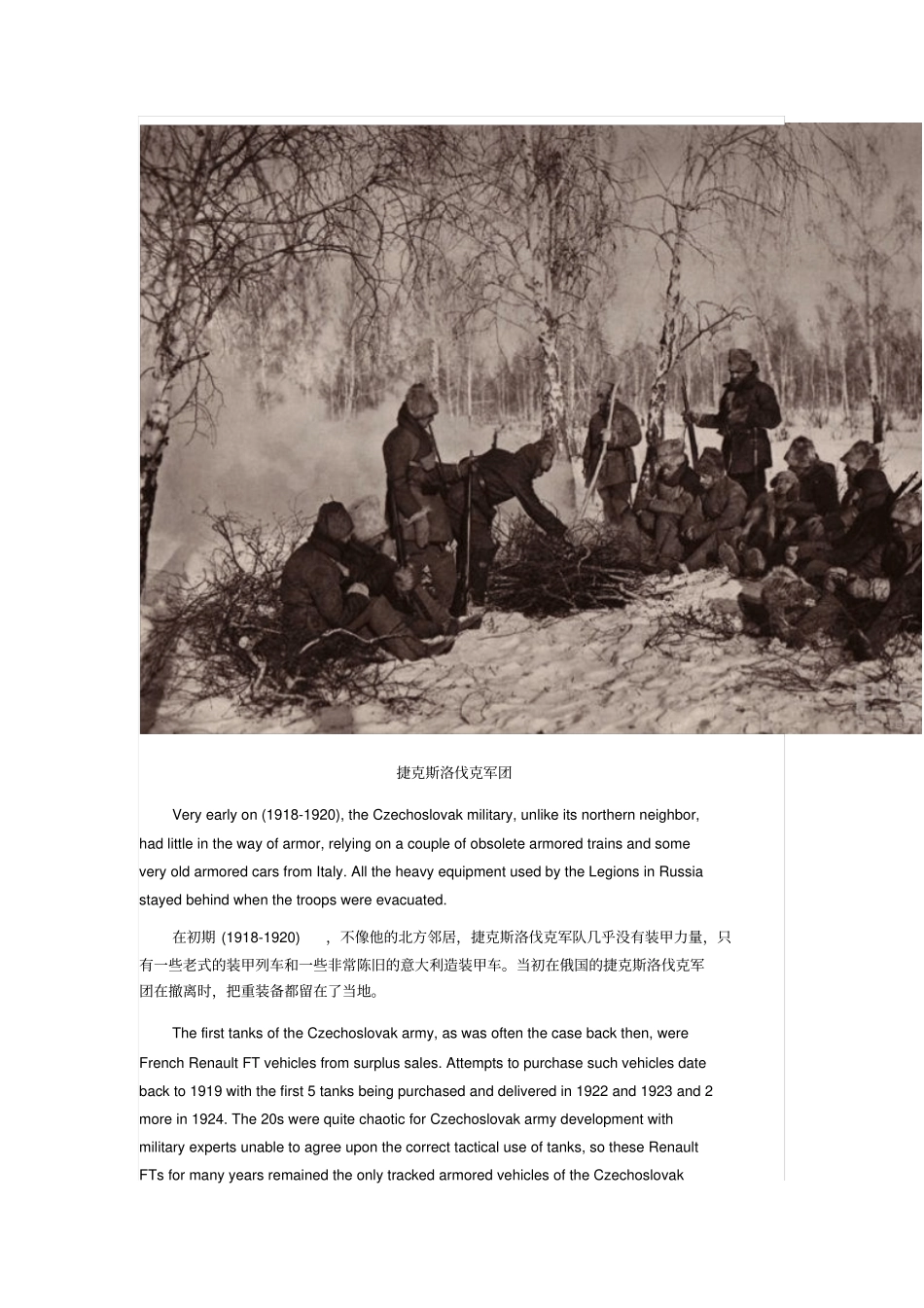Czechoslovakia was established from the ashes of the Austro-Hungarian Empire as a result of internal political upheaval that finally led to its dissolution in 1918. During the two decades of its pre-WW2 existence, it was one of the most developed countries in the region, inheriting the majority of the former empire's industrial potential. Even before it existed as a separate entity, Czech-made ?koda artillery was world-famous so it was only logical for Czech companies to use the arms-making expertise to design and build tanks. 1918年,由于内部政治动荡,奥匈帝国解体。 而捷克斯洛伐克就是在其遗迹上诞生的,此后在二战之前那段日子里,共存在了 20 年。由于继承了前帝国的大部分工业能力,捷克斯洛伐克曾是该地区最发达的国家之一。即使在独立之前,捷克造的斯柯达火炮也是世界闻名的,捷克的公司也必然会用他们在军火制造方面的专业知识来研制坦克。The Beginnings 起源The Czechoslovak army was from early on conceived as a mobile force to compensate for the lacking numbers of its larger neighbors. The most important element of its philosophy – mobility – came from the Legion experience. Czechoslovak Legions in Russia thrived on mobile warfare with infantry units supported by the firepower of armored trains and at one point practically controlled the entire Trans-Siberian Railway before being evacuated fromVladivostok and making their way back to their homeland. Old Legion officers were often appointed to positions of command. 相比国土更大的邻国,捷克斯洛伐克的兵源不足,为了弥补这一短板,捷克斯洛伐克陆军很早就开始构思组建一支机动武装力量。根据捷克斯洛伐克军团(译注:一战期间由捷克和斯洛伐克志愿兵组成的部队,站在协约国这一边)的作战经验,这一理念中最重要的一点就是于机动性。捷克斯洛伐克军团是在机动作战中成长起来的,他们用装甲列车上的火力支援步兵。在他们从海参崴撤出回到祖国之前,曾一度控制了整条跨西伯利亚铁路。旧军团的军...


